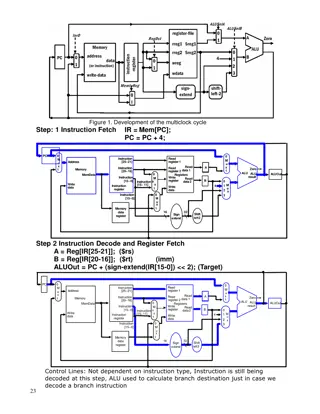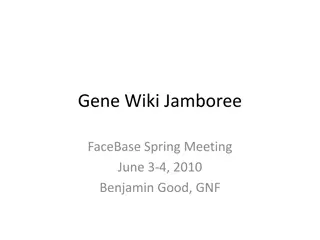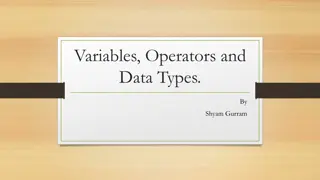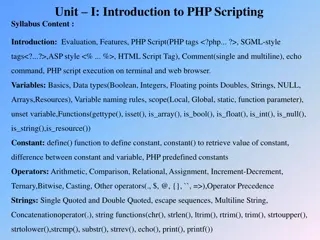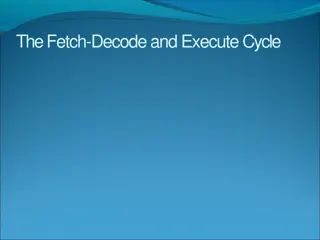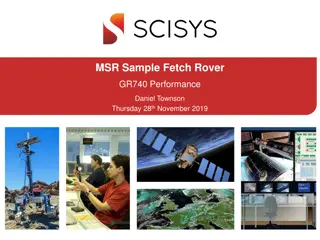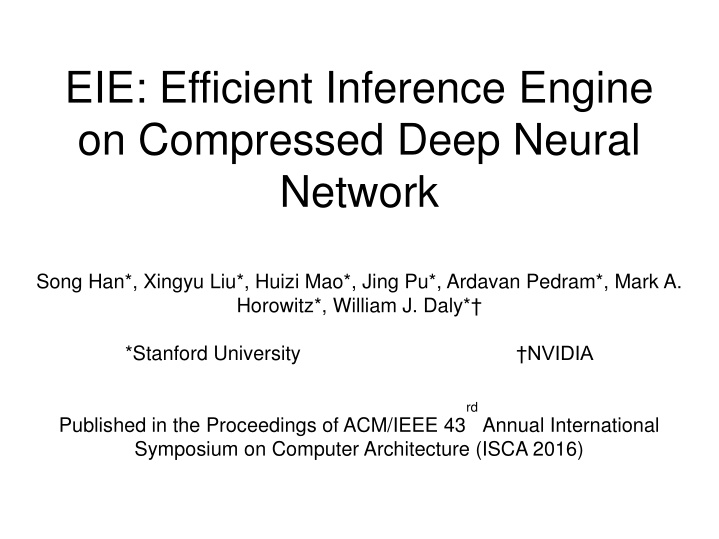
Efficient Inference Engine on Compressed Deep Neural Network
Explore the EIE - Efficient Inference Engine on Compressed Deep Neural Network, a solution for reducing the size of neural networks without losing accuracy through techniques like pruning, quantization, and Huffman encoding. Learn how deep compression makes large networks more suitable for low-power systems and mobile devices.
Download Presentation

Please find below an Image/Link to download the presentation.
The content on the website is provided AS IS for your information and personal use only. It may not be sold, licensed, or shared on other websites without obtaining consent from the author. If you encounter any issues during the download, it is possible that the publisher has removed the file from their server.
You are allowed to download the files provided on this website for personal or commercial use, subject to the condition that they are used lawfully. All files are the property of their respective owners.
The content on the website is provided AS IS for your information and personal use only. It may not be sold, licensed, or shared on other websites without obtaining consent from the author.
E N D
Presentation Transcript
EIE: Efficient Inference Engine on Compressed Deep Neural Network Song Han*, Xingyu Liu*, Huizi Mao*, Jing Pu*, Ardavan Pedram*, Mark A. Horowitz*, William J. Daly* *Stanford University NVIDIA rd Published in the Proceedings of ACM/IEEE 43 Symposium on Computer Architecture (ISCA 2016) Annual International
Motivation Deep Neural Networks are BIG ... and getting BIGGER e.g. AlexNet (240 MB), VGG-16 (520 MB) Too big to store on-chip SRAM and DRAM accesses use a lot of energy Not suitable for low-power mobile/embedded systems Solution: Deep Compression
Deep Compression Technique to reduce size of neural networks without losing accuracy 1) Pruning to Reduce Number of Weights 1) Quantization to Reduce Bits per Weight 1) Huffman Encoding Deep Compression: Compressing Deep Neural Networks with Pruning, Trained Quantization and Huffman Coding , Song Han et al., ICLR 2016
Pruning Remove weights/synapses close to zero Retrain to maintain accuracy Repeat Sparse Network
Quantization and Weight Sharing Quantize to fixed number of distinct values at no accuracy loss AlexNet conv layers quantized using 8 bits (256 16-bit weights) results in zero accuracy loss
Huffman Encoding General lossless compression scheme Encode more frequent values with less bits Letter Frequency Encoding A 7 0 AAAAAA ABCDDD D 3 10 B 1 110 C 1 111 19 bits vs 24 bits for 2-bit encoding Huffman, D. (1952) A Method for the Construction of Minimum-Redundancy Codes
Results Compression Ratios (same or better accuracy) LeNet-300-100 40X AlexNet 35X VGG16 49X LeNet-5 39X
Efficient Inference Engine (EIE) Compressed deep neural networks non-ideal on existing hardware EIE specialized architecture for inference on compressed DNN Multiple PEs Distributed SRAM storage
Distributed Weight Storage Weight Matrix distributed across PEs by row Activations stored distributed, but broadcast to all PEs COLORS show assignment to PE not how computation proceeds
Compressed Sparse Column (CSC) Array of Non-zero weights (4 bit entries) Array of Number of preceeding zeros (4 bit entries) Array of pointer to first non-zero weight in each column of weight matrix
SRAM 162 KB SRAM per PE Activations (2 KB) Sparse Matrix (128 KB) Pointers (32 KB) 93% Area
Processing Element (PE) Non-zero Activations broadcast to all PEs PE loads non-zero weights from SRAM Arithmetic Unit performs multiply-accumulate Result stored in Local Activation SRAM
Got to multiply with all weights along Processing Activations the corresponding column The weights are distributed Along Pes The amount of work per PE Varies: diff # of non-zero Ws There will be load imbalance
broadcast To gain performance, must do Skipping Zero Activations something else Distributed first-non-zero-activation detection Tree like
Load Imbalance Queueing sometimes is all you need
Pointer Reads Need pj and pj+1 How many Ws Two single-ported Banks
Toggle purpose (I or O) to implement feed forward Input/Output Activations 16 activations 4K activations across 64 Pes Longer vectors Use SRAM, do batches
Results EIE (64 PE), 13x faster than GPU (Titan X), 3400x more energy efficient
Strengths and Weaknesses Strengths Good compression ratio of weights Good energy efficiency Weaknesses Requires Retraining Poor performance for batch activations Transferring Activations between PEs can become bottleneck Not great on convolutional layers






